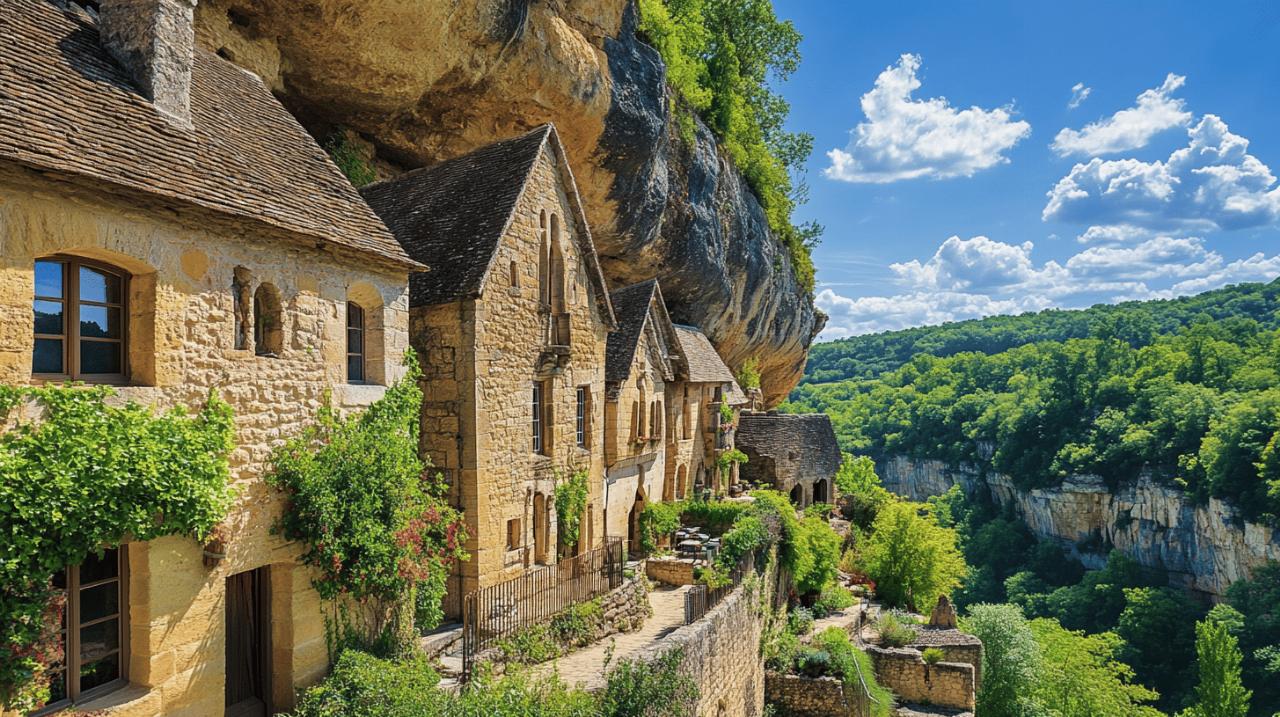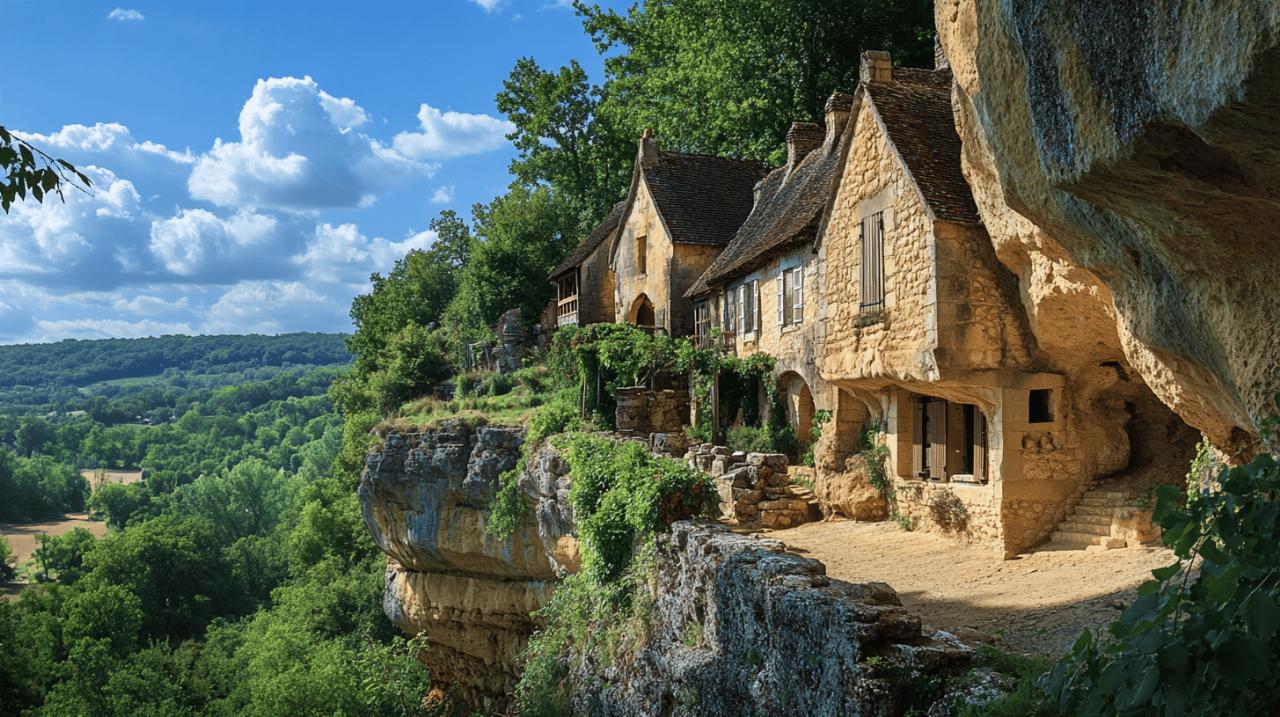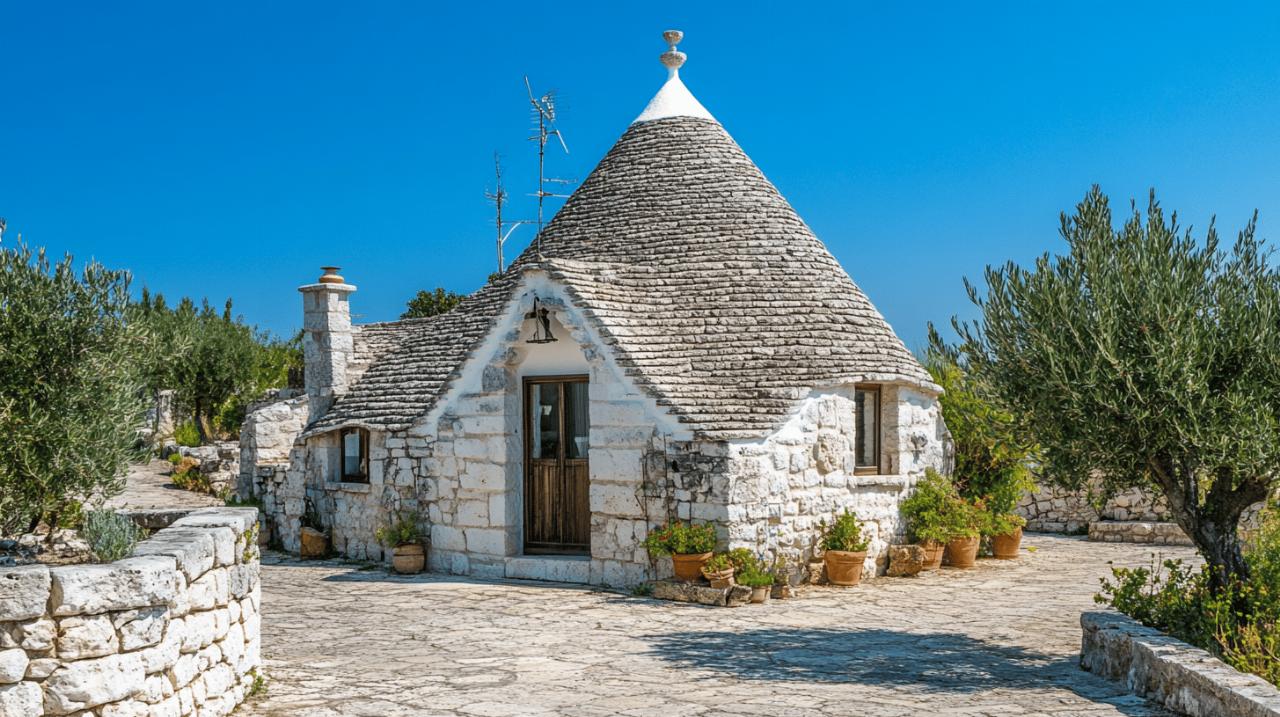Imagine swapping the relentless pace of urban existence for a journey into a landscape where history has been carved directly into the earth itself. The Dordogne region of France, particularly the Périgord, offers an escape into a world where medieval rock dwellings and prehistoric shelters reveal stories etched in stone. These troglodyte villages, far removed from the predictable rhythms of modern tourism, invite travellers to step back in time and discover a charm that remains largely unsuspected by those who have yet to wander their ancient pathways.
Unveiling the Hidden Treasures: Must-Visit Troglodyte Villages in the Périgord
The Périgord is home to some of the most captivating troglodyte villages in France, each offering a distinct glimpse into centuries of human ingenuity and resilience. Among these remarkable sites, La Madeleine and Les Eyzies stand out as destinations where the prehistoric past seamlessly merges with medieval heritage. La Madeleine, nestled in Tursac, boasts a history spanning an astonishing seventeen thousand years. Visitors can explore shelters that have been meticulously reconstructed to illustrate the habits and daily life of cliff dwellers from prehistory through to the Middle Ages. A peasant farm on site further enriches the experience, offering a taste of local produce and traditional practices that have endured through the ages.
La madeleine and les eyzies: where prehistoric meets medieval
Les Eyzies, often hailed as the prehistory capital of the world, serves as a gateway to understanding the deep roots of human habitation in the Dordogne. The National Prehistory Museum, located in the heart of the village, spans an impressive four hundred thousand years of human history. The shelters of Laugerie Basse, recognised as a UNESCO World Heritage site, date back to the Magdalenian era and offer a profound connection to the ancient peoples who once thrived in the Vézère valley. The proximity of these sites to one another makes it remarkably easy to combine visits, creating a cohesive narrative that traces the evolution of human settlement from the earliest times to the medieval period. The natural beauty of the valley, with its limestone cliffs and verdant landscapes, provides a stunning backdrop to these historical treasures.
Beynac, Reignac, and the Dramatic Cliff-Side Châteaux
Further along the winding paths of the Périgord, the dramatic cliff-side châteaux of Beynac and Reignac command attention with their imposing presence. The Château de Beynac, a formidable fortress perched high above the Dordogne River, has stood watch over the valley for centuries. Its robust stone walls and strategic location speak to a time when control of the waterways was paramount to survival and prosperity. Meanwhile, the Maison Forte de Reignac, located in Tursac, presents a unique troglodyte castle that has been classified as a Historic Monument since nineteen sixty-four. This cliff castle, which overlooks the Vézère valley, was inhabited for over two decades and now houses a fascinating exhibition on medieval life, including a somewhat macabre display of torture instruments intended for mature audiences. The fusion of natural rock formations with human-made fortifications creates an atmosphere that is both awe-inspiring and humbling, a testament to the resourcefulness of those who carved their homes into the very bones of the earth.
Living history: what makes dordogne's rock dwellings so remarkably unique
What sets the troglodyte villages of the Dordogne apart from other historical sites is the extraordinary manner in which they have been shaped by both nature and human hands. The limestone cliffs that define the region provided not only shelter but also a canvas for the creation of entire communities carved into the rock. This ancient art of troglodytique architecture is a testament to the ingenuity of generations who adapted to their environment with remarkable skill. The dwellings range from simple rock shelters used by prehistoric hunters to complex, multi-level villages that functioned as self-sufficient communities during the Middle Ages.
The Ancient Art of Troglodytique Architecture Carved into Limestone
The process of carving into limestone required precision and patience, qualities that are evident in the intricate designs and functional layouts of these rock dwellings. At La Roque Saint-Christophe, for instance, a limestone cliff stretching over a kilometre in length and rising eighty metres above the valley floor has been home to humans for fifty-five thousand years. The site features a five-level city built into the cliffs, complete with a three-hundred-metre-long aerial terrace that offers breathtaking views of the Vézère valley. The fortress, which was fortified by order of the Bishop of Périgueux in nine seventy-six, was later dismantled during the Wars of Religion in fifteen eighty-eight. Today, visitors can explore the reconstructions of scaffolding and machinery that illustrate the methods used by medieval builders. The Grand Escalier, recognised as the largest staircase carved from a single block of stone in Europe, stands as a monumental achievement of medieval engineering. The site has been awarded LPO Refuge status in twenty twenty-three and the NF Environnement label in twenty sixteen, reflecting ongoing efforts to preserve this extraordinary heritage.
From Le Moustier to Marzac: Museums and Ruins That Tell Medieval Tales
The villages of Le Moustier and Marzac, along with other sites scattered throughout the Périgord, offer museums and ruins that bring medieval tales to life. These locations serve as open-air classrooms where the past is not merely observed but felt. At Castel Merle, a prehistoric site in Sergeac, evidence of human occupation stretches back eighty-five thousand years, while the Grotte du Régourdou Caves in Montignac contain Neanderthal remains that provide invaluable insights into early human life. The shelter of Cap Blanc features intricate engravings, including depictions of horses, alongside a burial site that speaks to the spiritual beliefs of ancient communities. The Clumsy shelter showcases a sculpture of a woman carved twenty-four thousand years ago, a poignant reminder of the artistic sensibilities that have always been an integral part of human culture. Belves, a fortified village, offers troglodyte dwellings that explain peasant life in the Middle Ages, complemented by a sixteenth-century castle and thirteenth-century churches. The combination of archaeological rigor and imaginative reconstruction at these sites ensures that visitors leave with a deep appreciation for the resilience and creativity of the people who once called these cliffs home.
Escaping the London Madness: Why the Vézère Valley Offers the Perfect Antidote
 For those weary of the relentless pace of city life, particularly the frenetic energy of London, the Vézère valley presents an antidote that is both restorative and transformative. The transition from the crowded underground trains and bustling streets to the serene landscapes and timeless villages of the Dordogne is nothing short of liberating. This region, with its UNESCO World Heritage sites and tranquil rural charm, offers a chance to disconnect from the demands of modern existence and reconnect with a slower, more contemplative way of being.
For those weary of the relentless pace of city life, particularly the frenetic energy of London, the Vézère valley presents an antidote that is both restorative and transformative. The transition from the crowded underground trains and bustling streets to the serene landscapes and timeless villages of the Dordogne is nothing short of liberating. This region, with its UNESCO World Heritage sites and tranquil rural charm, offers a chance to disconnect from the demands of modern existence and reconnect with a slower, more contemplative way of being.
Trading the Tube for UNESCO World Heritage Sites in Rural France
The contrast between the tube and the tranquil pathways of the Vézère valley could hardly be more pronounced. In place of the constant noise and hurried commutes, visitors find themselves wandering through villages where time appears to have stood still. The Cistercian abbey at Cadouin, located twenty-five kilometres from Slow Village Saint-Cybranet, is a UNESCO World Heritage site that embodies the spiritual and architectural achievements of the medieval period. The cloister, with its serene courtyards and intricate stonework, offers a space for reflection and quiet contemplation. Nearby, the farmer's market provides an opportunity to engage with local producers and savour the flavours of the region, from truffles and foie gras to walnuts and strawberries. The abbey at Saint-Amand-de-Coly, just twelve kilometres from the same village, features troglodyte houses alongside a medieval garden that has been lovingly restored. These sites, far removed from the commercialised attractions that dominate many tourist destinations, offer an authenticity that is increasingly rare in the modern world.
Slow travel through time: discovering villages where history stands still
The concept of slow travel finds its ideal expression in the villages of the Dordogne, where the emphasis is not on ticking off a checklist of sights but on immersing oneself in the rhythms of a place. At Commarque, located eighteen kilometres from Slow Village Saint-Cybranet, a medieval castle and troglodyte dwellings coexist within an isolated valley that has changed little over the centuries. Hiking trails wind through the landscape, offering glimpses of prehistoric remains and providing a tangible connection to the countless generations who have traversed these same paths. La Roque Gageac, a village along the Dordogne River, features the Fort of Roque Gageac perched one hundred and twenty metres above the valley floor. The village itself, with its stone houses clinging to the cliff face, exudes a timeless beauty that has captivated visitors for generations. The slow pace of life in these villages, where the modern world feels like a distant memory, allows travellers to engage more deeply with their surroundings and to appreciate the subtle details that define the character of a place. The absence of the usual tourist crowds during quieter hours only enhances the sense of discovery and intimacy that these locations inspire.
Planning your troglodyte adventure: practical tips for exploring rock villages
Embarking on a journey through the troglodyte villages of the Dordogne requires some thoughtful preparation to ensure that the experience is as enriching as it is enjoyable. While the region is welcoming and accessible, a few practical considerations can make all the difference in how you engage with these remarkable sites. From choosing the best routes to understanding what to expect at each location, a bit of advance planning will allow you to make the most of your time in the Périgord.
Best Routes Through Belves, Tursac, and the Most Photogenic Spots
Navigating the winding roads and hidden pathways of the Périgord is part of the adventure, and selecting the right route can reveal the most photogenic and historically significant spots. Belves, with its fortified village and troglodyte dwellings, is an excellent starting point for those interested in understanding peasant life in the Middle Ages. The village is compact enough to explore on foot, allowing visitors to meander through narrow streets and discover hidden corners that offer stunning views of the surrounding countryside. Tursac, home to both La Madeleine and the Maison Forte de Reignac, is another essential stop. The proximity of these two sites makes it possible to experience both the prehistoric and medieval aspects of troglodyte life in a single visit. The Fort Troglodyte de la Roque Gageac, which has been open to the public since twenty twenty, provides an authentic glimpse into the fortifications that once protected the inhabitants of these cliffs. For those with a passion for photography, the soft, golden light that bathes the valley during the early morning and late afternoon creates ideal conditions for capturing the unique textures and contours of the limestone cliffs and ancient dwellings. Carrying a camera and allowing time for spontaneous detours will reward travellers with images that convey the timeless beauty of the region. Wearing good shoes is essential, as many of the sites involve steep stairs and uneven terrain. While pushchairs and wheelchairs are not recommended inside most troglodyte dwellings due to the challenging topography, alternative routes are often available for those who require them. Bringing water and snacks is advisable, particularly if you plan to spend several hours exploring multiple sites. Finding out about guided tours in advance can greatly enhance your understanding of the history and significance of each location, as knowledgeable guides bring the stories of the past to life with vivid detail and personal anecdotes.
Where to Stay and What to Expect in the Périgord's Cave Dwellings
Accommodation in the Périgord ranges from charming bed and breakfasts to more secluded retreats such as Slow Village Saint-Cybranet, which serves as an ideal base for exploring the troglodyte villages. This open-air hotel, located in the heart of the region, offers a tranquil setting where guests can unwind after a day of exploration. The village is within easy reach of many of the key sites, making it a convenient choice for those who wish to maximise their time in the area. Staying in a location that reflects the rustic charm of the Dordogne enhances the overall experience, allowing travellers to immerse themselves fully in the rhythms of rural French life. When visiting the troglodyte dwellings themselves, it is important to approach the experience with a sense of curiosity and respect for the historical significance of these sites. Many of the villages were once self-sufficient communities, complete with churches, blacksmiths, abattoirs, prisons, and even banks. Understanding the ingenuity required to carve such complex settlements into the rock face adds depth to the visit and fosters a greater appreciation for the resilience of the people who lived there. Children, in particular, are often captivated by the reconstructions of scaffolding and machinery, which offer a hands-on sense of how these dwellings were created and maintained. Safety railings are in place at most sites, but care is always needed, especially with young children, given the steep drops and uneven surfaces. The route through many of these villages spans approximately one kilometre, providing ample opportunity to explore without feeling rushed. Free guided tours are frequently available, and taking advantage of these can significantly enrich your understanding of the site. The Pass Decouverte, which offers discounts on multiple attractions, is worth considering if you plan to visit several locations. A cafe near the car park at La Roque Saint-Christophe provides a welcome spot to rest and reflect before or after your visit. Combining village visits with excursions to other nearby attractions, such as the Gouffre de Proumeyssac, an underground chasm in Audrix featuring an underground river and stunning crystallizations, or the caves of the Château de Commarque, can create a well-rounded itinerary that showcases the diverse heritage of the Dordogne. The region's reputation as the Land of a Thousand and One Castles is well deserved, and the Château de Castelnaud, with its towering stone walls and war museum, offers a complementary perspective on medieval life. Sarlat-la-Canéda, a town of art and history renowned for its markets and culinary delights, provides an opportunity to indulge in the local gastronomy, from truffles and foie gras to walnuts and wine. Whether you are drawn by the prehistoric cave art of Lascaux, the awe-inspiring underground landscapes of Le Gouffre de Padirac, or the quiet beauty of the Dordogne River, a UNESCO Biosphere Reserve, the Périgord promises an adventure that is as enriching as it is unforgettable.





